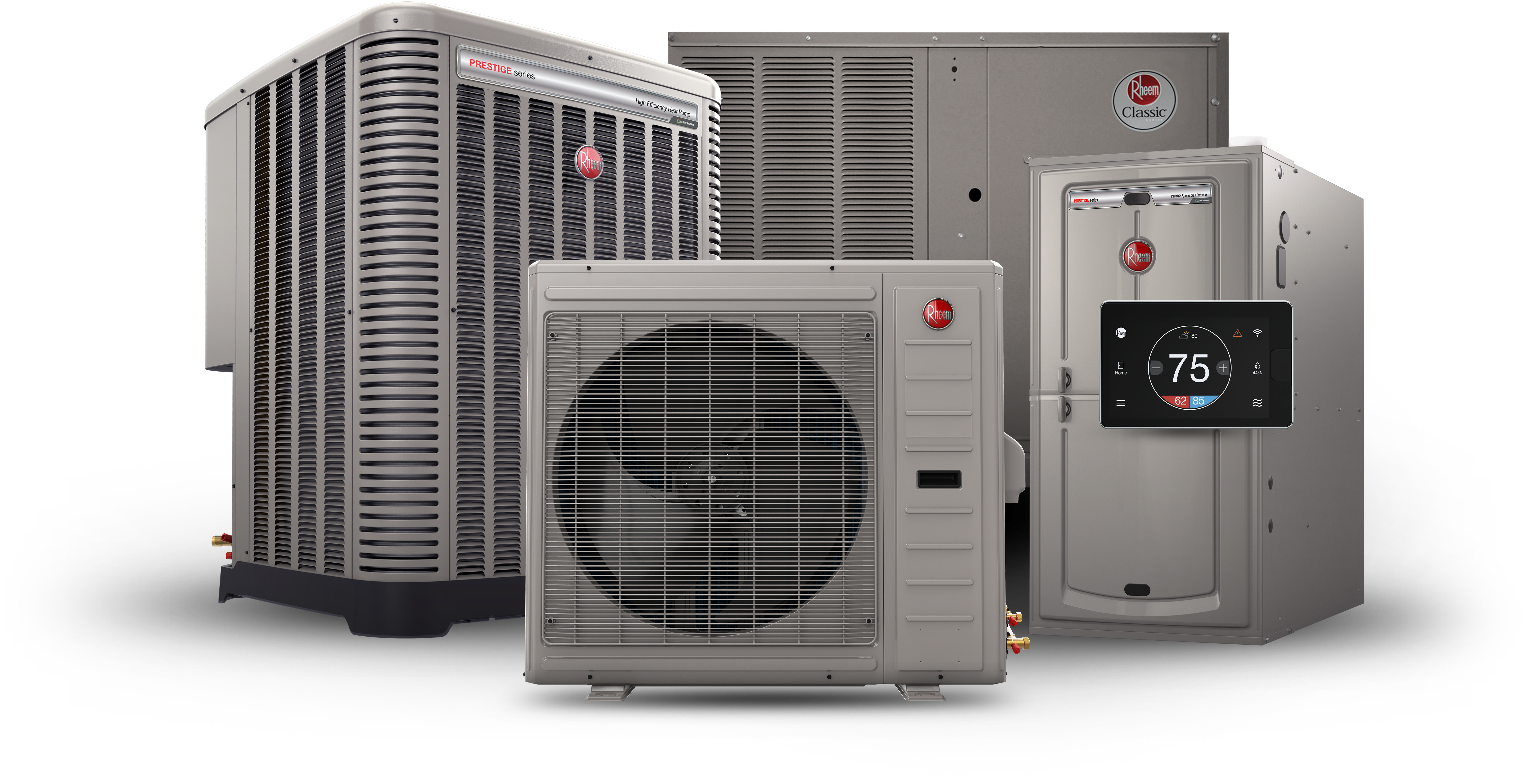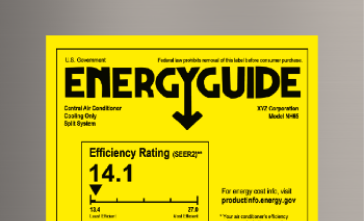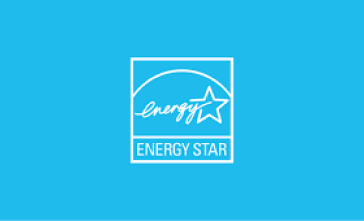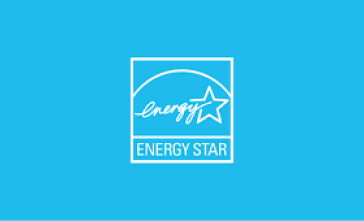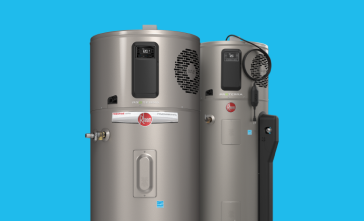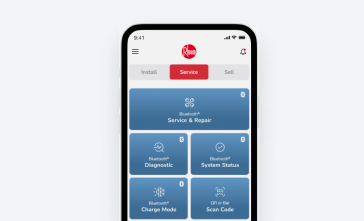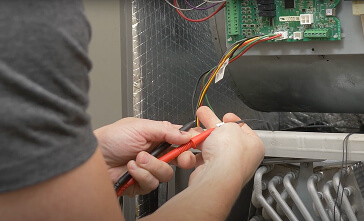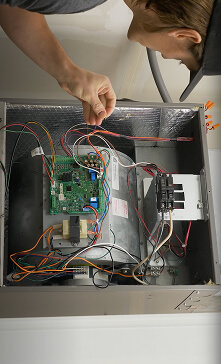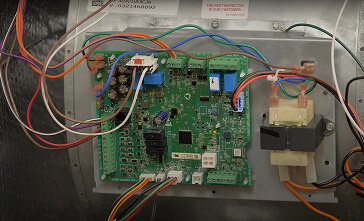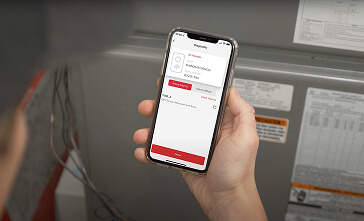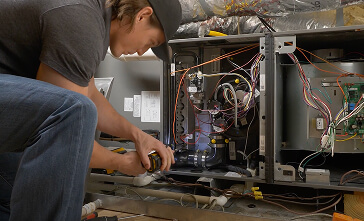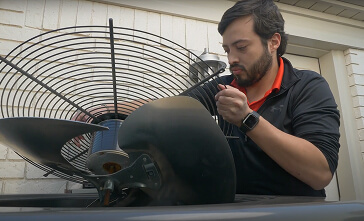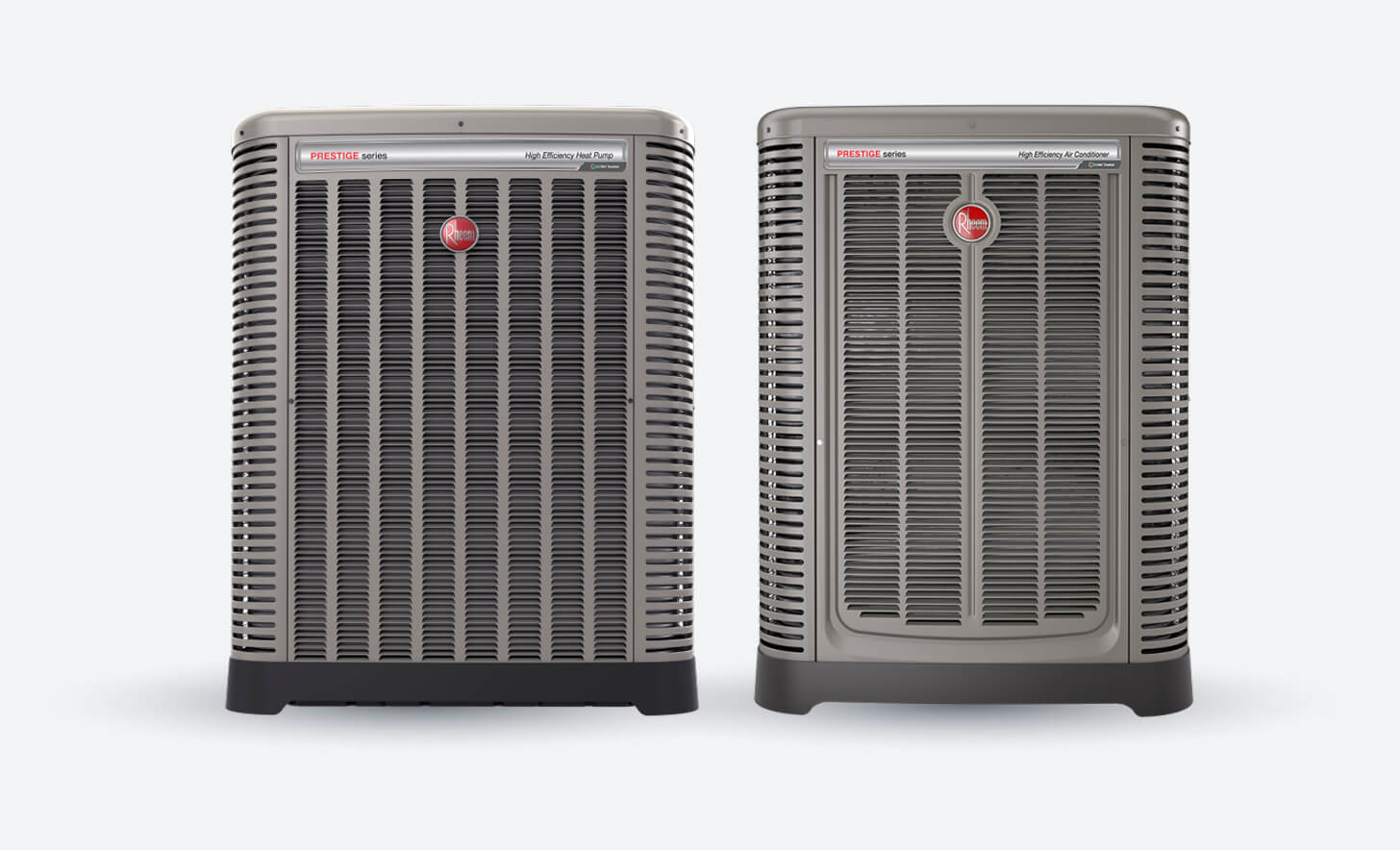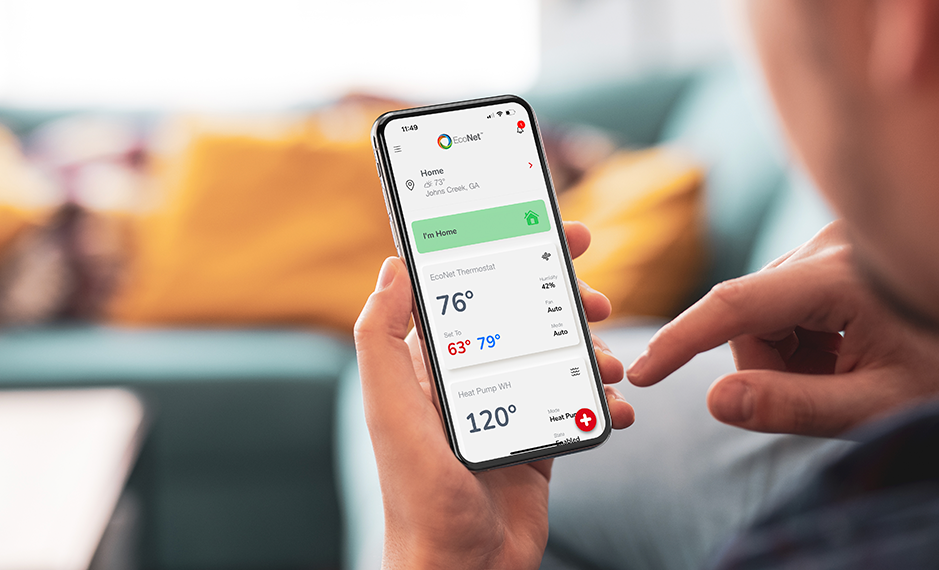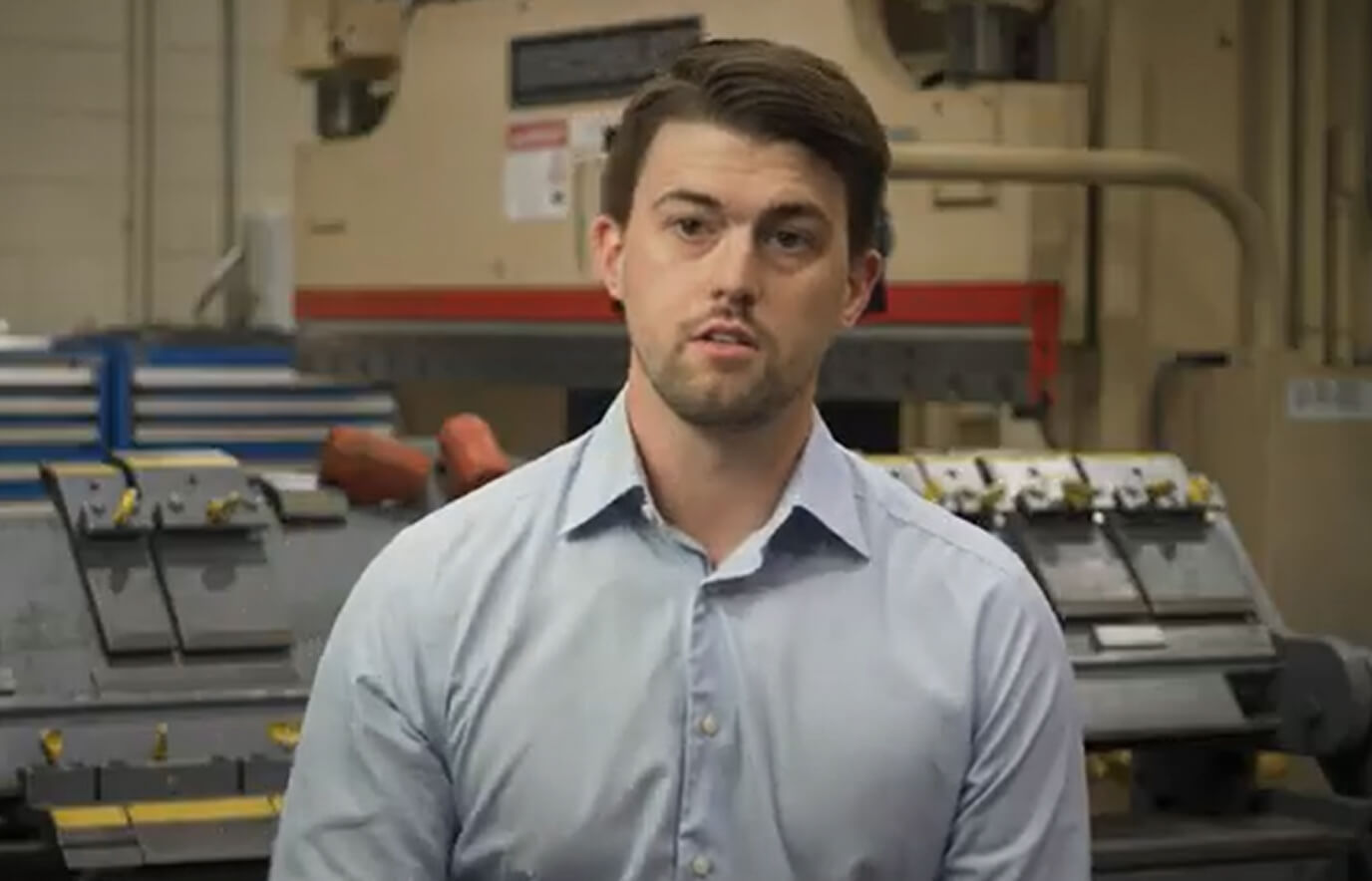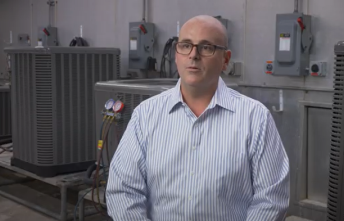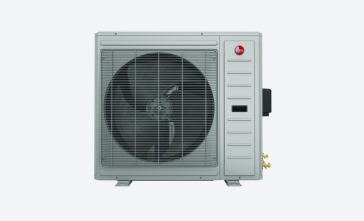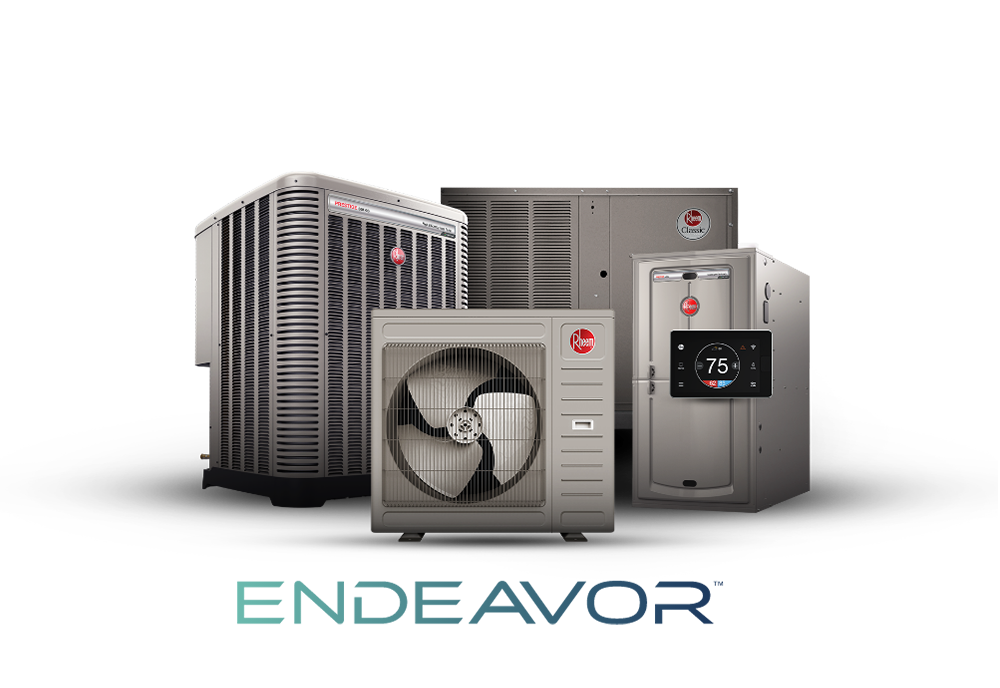

As the new DOE Requirements Take Effect Jan. 1, 2023, Rheem will be ready with the all-new Endeavor™ Line of Furnaces, Air Conditioners, Heat Pumps and Air Handlers. So even as regulations get tougher, your job gets easier.
Endeavor Features & Benefits
- Easy Fit: We raised efficiency without drastically increasing equipment size
- Easy Installation: Bluetooth connectivity for easier, more accurate commissioning
- Easy Service: Better accessibility and Bluetooth diagnostics
- Easy Registration: Register warranties and claim rewards via mobile app
- Quieter Operation: Brushless motors and acoustics-conscious design
- More Choices: Industry-leading Heat Pump selection plus all-electric solutions
- Smart Home Compatibility: EcoNet® technology available in more products
Select models available now for Distributor order.
Recap: 2023 Minimum Efficiency Standards
As of 2023, newly manufactured residential and commercial equipment sold in the U.S. must meet minimum efficiency standards set by the DOE. For single-phase residential and light commercial central air conditioning systems, the M1 efficiency requirements vary by region.
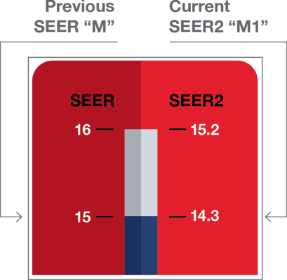

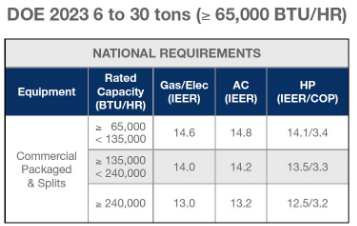

Understanding Compliance by Region: North, Southeast & Southwest
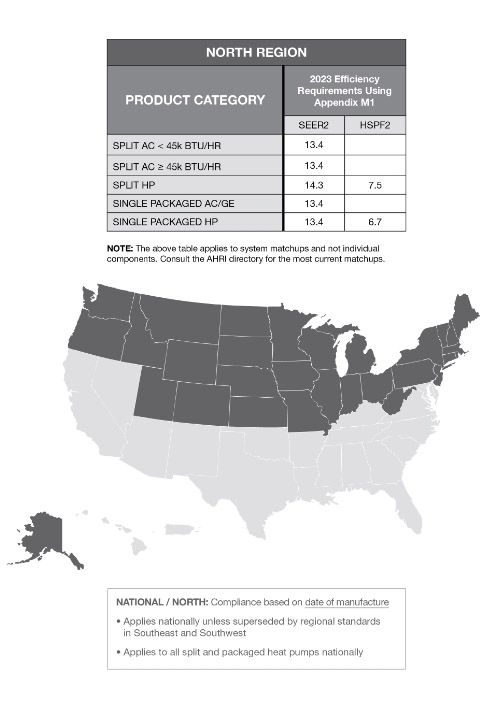

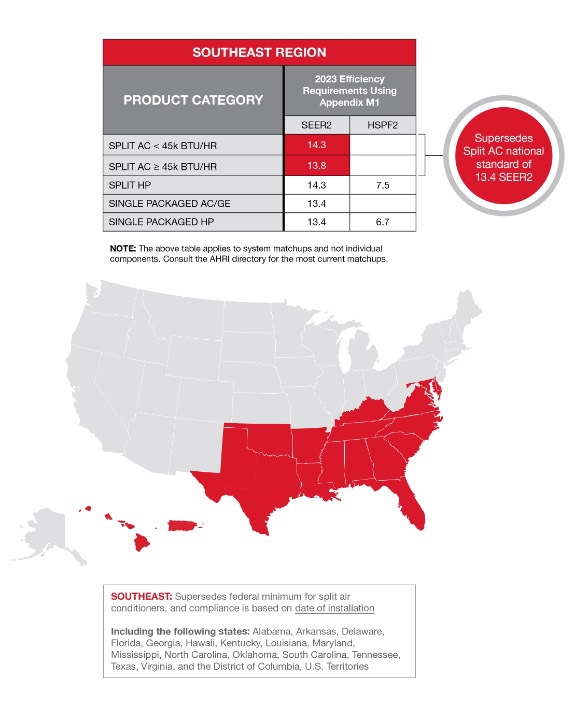

Heat pumps and packaged AC systems manufactured prior to 1/1/2023 can continue to be installed, provided the equipment was compliant at the time it was produced.
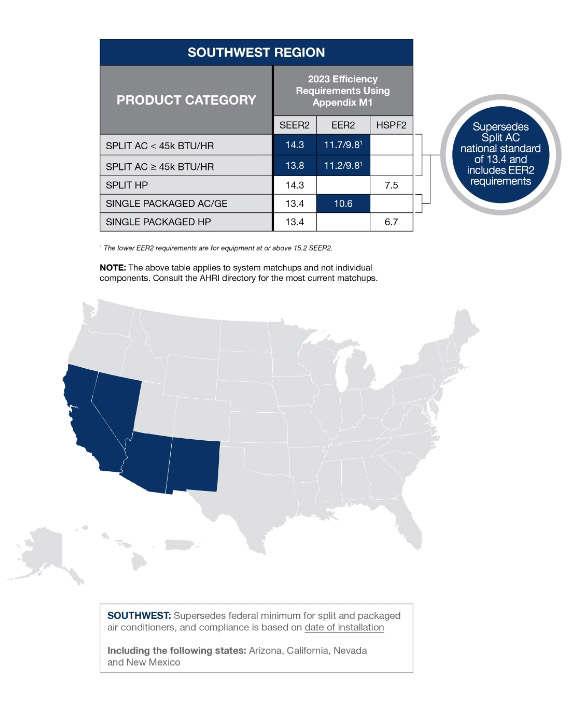

Heat pumps manufactured prior to 1/1/2023 can continue to be installed, provided the equipment was compliant at the time it was produced.
2025: Technology Transition Rule on GWP Limits
In October 2023, the U.S. EPA finalized the Technology Transitions Restrictions on the Use of Certain Hydrofluorocarbons (HFCs) under Subsection (i) of the AIM Act, establishing GWP limits for the applications that use HFCs. The Technology Transitions Rule contains a 700 GWP limit for air conditioners and heat pumps by 2025, prohibiting the use of R-410A, which has a GWP of 2,088. This rule has had quite the journey, going back to 2020 when the AIM legislation was enacted. Responding to recent concern by industry, EPA signed an interim final rule in December 2023, regarding the installation compliance date for residential heat pump and air conditioning systems. The amendment allows for installation of higher-GWP HFC equipment manufactured or imported before January 1, 2025, to be installed until January 1, 2026.
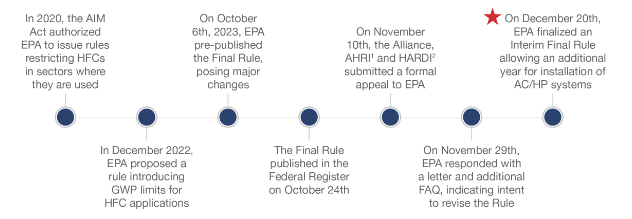



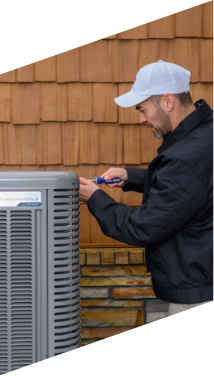

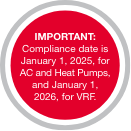

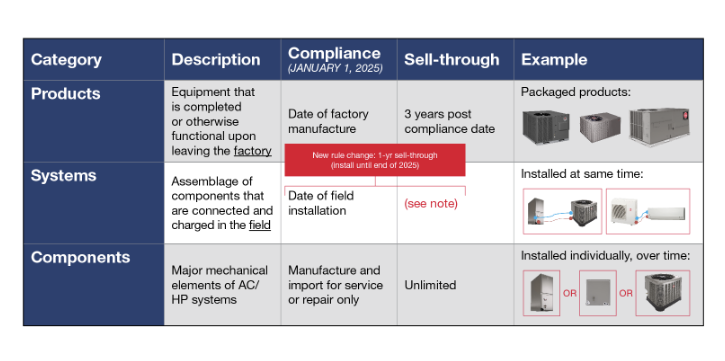

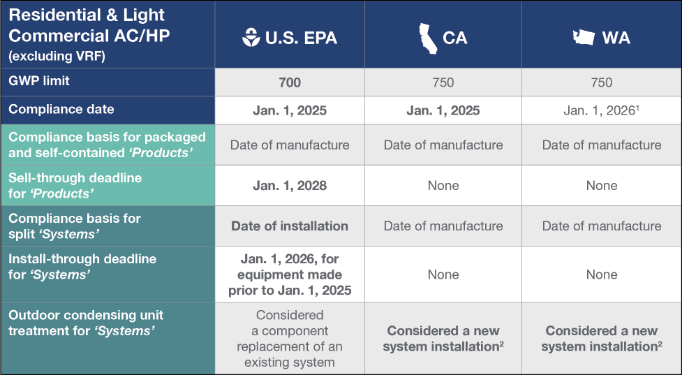

Basics of A2Ls
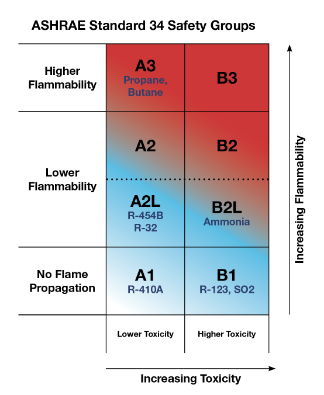



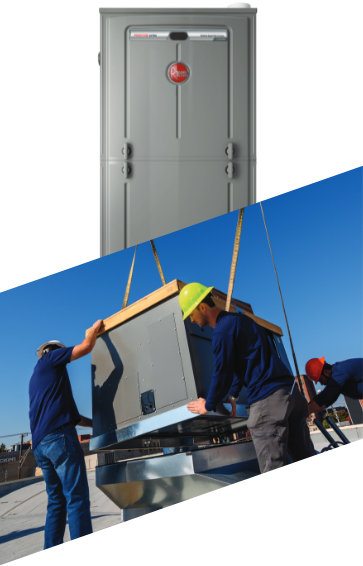

On The Horizon
Furnace Efficiency Rule On December 18, 2023, the DOE published the final rule for energy conservation standards of consumer furnaces, making official the new minimum annual fuel utilization efficiency (AFUE) of 95% in the Federal Register. Compliance with the amended standards will be required on December 18, 2028. NOTE: The gas industry has launched a lawsuit against DOE, challenging the final rule. The result of the legal challenge will likely take some time to resolve, but stakeholders should continue to prepare for the 2028 compliance date as stated in the rule.
ENERGYGUIDE LABELING
101 & 2023 CHANGES
ENERGYGUIDE 101
The FTC (Federal Trade Commission) first issued an Energy Labeling Rule in 1979. The Rule requires manufacturers of major home appliances to attach yellow EnergyGuide Labels to products and post label information to supporting brochures and websites.
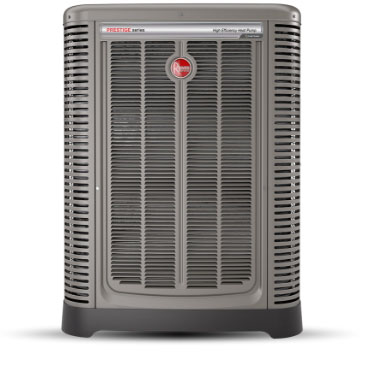

Consumers should use EnergyGuide Labels to comparison shop for the best in energy-efficient solutions.
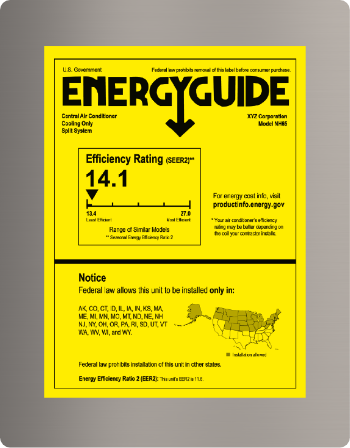

Split System Air Conditioner,
Cooling Only, Northern States
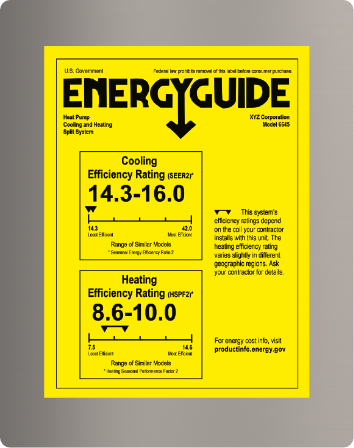

Split System Heat Pump,
Cooling & Heating, All States
- Estimated annual energy cost
- Product’s energy consumption / energy efficiency rating as determined by the Department of Energy (DOE) test procedures
- A range that shows the highest and lowest energy costs or efficiency ratings
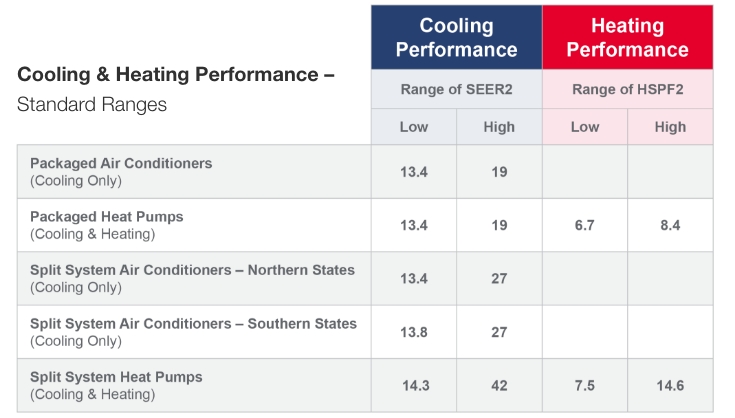

ENERGY STAR
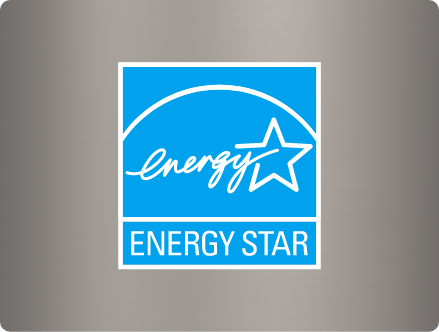

NATE-certification & the Importance of Properly Trained Contractors
When it comes to training and certifications, everyone connected to the HVAC industry benefits —contractors, technicians and even homeowners. North American Technician Excellence (NATE) is the nation’s largest nonprofit certification organization for heating, ventilation, air conditioning and refrigeration (HVACR) technicians. Headquartered in Arlington, VA, NATE was developed by and has been supported by the industry for over 20 years.


- • Higher satisfaction – Thanks to fast service and fewer callbacks and warranty returns
- • Increased confidence
- • Lower utility bills – Because their systems are operating more efficiently
- • Peace of mind – From knowing that their systems are in good hands
What Is the NATE Program & Who Is It For? Developed by a committee of industry experts, the NATE program is a series of exams that result in either certificates or full certifications and is designed for contractors and technicians of all experience levels. The entry-level tests, Ready-to-Work and HVAC Support are intended for those with less than 12 months of experience. Those who pass the tests earn a certificate, that identifies them as someone knowledgeable and trained in the field. More rigorous exams are required to receive a full NATE certification. Who is Eligible for Full NATE Certification & What Does It Entail? NATE certification is recommended for contractors and technicians with two or more years of experience. There are two certification testing pathways available: the Certified HVAC Professional (CHP-5) pathway, a series of five exams, or the Core and Specialty exam pathway, a series of two exams. For more information on either of these pathways, visit the NATE website. Are There Training Courses Available to Help with Exam Preparation? NATE has partnered with lnterPlay Learning to launch NATE Training Academy, which allows contractors and technicians to train for NATE certification exams online when convenient for them. The online training includes 3D and VR simulations that mimic in-field experience. Contractors and technicians can start prepping for NATE’s Certified HVAC Professional exam today. Additionally, this fall, training will be available for NATE’s Low-GWP refrigeration certification.
HVAC KnowZone®


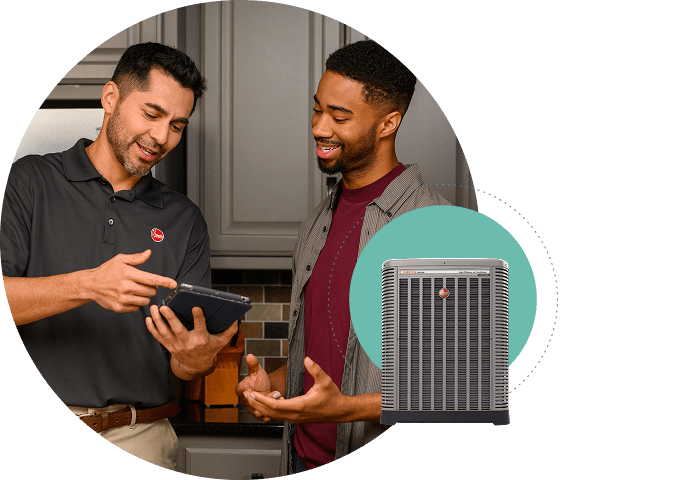

Change is here—let’s navigate it together
The push to increase energy efficiency and reduce emissions continues to drive change in the HVAC industry. As a result, the government is instituting significant changes in energy efficiency criteria and ratings for both residential and commercial equipment.
Rather than viewing the regulatory changes as a problem to be solved, Rheem is embracing them as an opportunity to innovate new technologies to create an even better product line for contractors and homeowners.
To help you understand what’s changing, why, and how it’ll affect you, we’re pleased to bring you this HVAC KnowZone® to act as a central hub, where you can easily access information as it becomes available.

